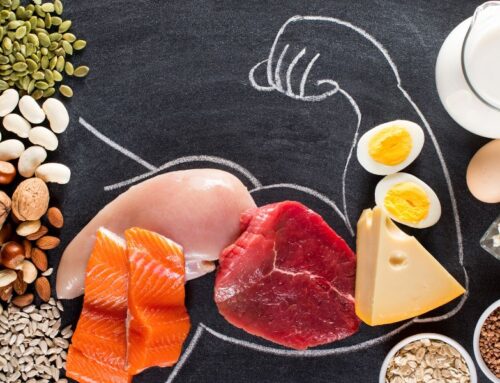July 17, 2025
Part 5: GLP-1, Leptin, Ghrelin, & Natural Appetite Regulation
Before We Dive In, Let’s Do a Quick Check-In:
- What are you currently doing to improve your metabolic flexibility?
- Have you adjusted your meal timing or allowed space between meals?
- Are you engaging in movement, fasting, or recovery that helps activate AMPK?
These changes don’t just support fat metabolism, they reshape the hormonal signals that drive hunger, cravings, and satisfaction. Let’s take a look at three of those critical hormones and what you can do when they’re out of sync.
Appetite Hormones 101: GLP-1, Leptin, & Ghrelin Explained
There are three major hormones at play in appetite regulation: GLP-1, leptin, and ghrelin. When they’re in rhythm, your hunger and fullness cues make sense. But when they’re off, which is common in metabolic dysfunction, it feels like your appetite has a mind of its own.
GLP-1: The Satiety Hormone That Supports Blood Sugar Balance
GLP-1 (glucagon-like peptide-1) is released from your gut after meals. It helps you feel full, slows stomach emptying, and supports blood sugar control by improving insulin sensitivity. It’s so effective that drugs like Ozempic and Wegovy work by mimicking GLP-1’s effects.
The good news? You can support GLP-1 naturally by:
- Eating protein-rich, fiber-rich meals
- Including resistant starch (like cooked and cooled potatoes, green bananas, or lentils)
- Adding fermented foods to support your gut bacteria
- Moving your body regularly, especially after meals
- Establishing consistent eating rhythms (no grazing)
Leptin: Your Long-Term Appetite Regulator & How It Gets Blocked
Leptin, produced by your fat cells, tells your brain you’ve had enough to eat. But in people with inflammation, insulin resistance, or visceral fat, the brain can become leptin resistant, meaning it stops listening to the signal.
That’s when hunger stays high and metabolism slows down, even when fat stores are already full. This often leads to increased cravings, reduced thyroid function, and stalled fat loss.
But here’s something many people miss: elevated triglycerides, easily seen on a standard cholesterol panel, can block leptin’s ability to reach the brain.
Triglycerides interfere with leptin transport across the blood–brain barrier, meaning your brain may never receive the “I’m full” message — even if leptin levels in your blood are high. This is a key driver of central leptin resistance, and it can occur even with moderately elevated triglyceride levels, not just extreme cases.
If you’re eating well, spacing meals, exercising, and still feeling hungry or fatigued, it’s possible your triglycerides are interfering.
The good news? Triglycerides are highly responsive to lifestyle. We help clients at WellCentric lower them by:
- Reducing refined carbs and sugar
- Supporting healthy omega-3 intake
- Improving meal structure and insulin sensitivity
- Supporting liver and mitochondrial function
If you need help getting your triglycerides under control, or aren’t sure if they’re contributing, WellCentric Health is here to help.
Ghrelin: The Hunger Hormone Triggered By Stress & Sleep Deprivation
Ghrelin is your hunger-stimulating hormone. It rises before meals and drops after eating — but it stays elevated when you’re sleep-deprived, stressed, or constantly snacking. This makes it hard to feel satisfied, even when your body has enough energy.
To support healthy ghrelin patterns:
- Prioritize 7–9 hours of sleep
- Avoid grazing and late-night eating
- Base meals around high-protein, whole foods
- Build stress management and daily movement into your routine
Why Solid Protein Is Better for Hunger Control Than Protein Shakes
Protein is essential for appetite regulation, but the form matters.
Solid protein (like chicken, fish, eggs, or tofu) is more effective than protein shakes for promoting fullness and reducing calorie intake later. That’s because chewing, texture, and digestion time enhance satiety signaling between your gut and brain.
Shakes are helpful for convenience, post-workout recovery, or travel days. But for long-term appetite control and hormone regulation, real food protein wins.
Practical Tips To Support Satiety Hormones Naturally
- Build each meal around 25–30g of protein and 8–12g of fiber
- Eat 2–3 structured meals, spaced 4–6 hours apart
- Stop grazing — give hormones a chance to reset
- Walk after meals to improve insulin and GLP-1 response
- Sleep well — even one short night raises ghrelin and blunts leptin
- Reduce sugar, refined carbs, and alcohol
Optional Tools For Appetite Regulation Support
These aren’t required, but they may support your efforts:
- Thylakoids (from spinach extract) – enhance GLP-1 and blunt cravings
- Myo-inositol – supports leptin and insulin sensitivity, especially in women
- Allulose, monk fruit, and stevia (pure extract) – sweeteners that won’t spike insulin or trigger rebound hunger
Fiber’s Role In Appetite Hormone Balance & Detox Support
Fiber is a powerful tool for metabolic health. It feeds gut bacteria, which produce short-chain fatty acids like butyrate, compounds that help regulate GLP-1, reduce inflammation, and support the gut-brain axis.
Fiber also helps bind and eliminate:
- Excess estrogen
- Bile acids
- Environmental toxins
Most people fall short. Aim for 25–35 grams per day from legumes, leafy greens, oats, chia, flax, and berries.
Obesogens: Hidden Chemicals That Disrupt Appetite & Metabolism
Even when you’re eating well, moving regularly, and getting sleep, your environment may still be interfering with your ability to lose weight or feel satisfied. One major reason? Obesogens.
Obesogens are environmental chemicals that disrupt hormone signaling, particularly those involved in appetite regulation, fat storage, insulin sensitivity, and metabolism. They don’t just sit in the background; they actively influence how your body processes calories and how your brain interprets hunger and fullness.
These compounds can mimic or block hormone activity, alter gene expression in fat cells, and promote fat accumulation, especially in visceral and stubborn areas. They’ve been linked to leptin resistance, insulin resistance, and even impaired GLP-1 and estrogen signaling.
You’ll find obesogens in a wide range of everyday products, including soft plastics (used in food storage, water bottles, and packaging), nonstick cookware (like Teflon), fragranced personal care items and air fresheners, pesticide-treated produce, and receipts or food wrappers made with thermal paper.
This isn’t meant to alarm you, but to empower you. You don’t have to eliminate every exposure, but we suggest you do your best to reduce your daily burden where you can.
Start by storing food in glass or stainless steel, not plastic — especially if it’s hot or acidic. Avoid microwaving in plastic altogether. Choose clean personal care and cleaning products that are free from synthetic fragrance. Buy organic produce when possible — especially items on the Environmental Working Group’s Dirty Dozen list. And wash your hands after handling receipts or food wrappers.
Reducing your exposure to obesogens won’t just support hormone balance — it may make your hunger cues more accurate, your fat loss efforts more effective, and your energy more stable.
At WellCentric Health, we often remind our clients: Your body can’t detox what it can’t identify or eliminate. Supporting detox pathways, reducing input, and increasing fiber, greens, and hydration can go a long way toward clearing out these unseen metabolic saboteurs.
Coming Up Next: Part 6 – Muscle & Fat Loss Metabolism
Now that you’ve got a handle on satiety and hunger signaling, we’ll turn to the single most powerful tissue for driving fat loss and metabolic health: muscle.
You’ll learn why preserving and building lean mass isn’t optional; it’s essential.






